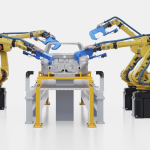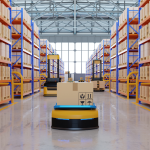Predictive analytics and automation are redefining risk management, but AI’s real potential lies in proactive resilience.
AI’s Shift from Prediction to Prevention
Supply chain risk is more unpredictable than ever, with disruptions from geopolitical instability, extreme weather, and supply shortages becoming the norm rather than the exception. Companies have long used data analytics to react to risks, but artificial intelligence is now shifting the equation—turning risk management from a reactive process into a proactive strategy.
AI-powered systems can continuously scan for early warning signs of disruptions, analyzing everything from commodity price shifts and supplier financial health to transportation delays and regional conflicts. Machine learning models, trained on vast datasets, are identifying patterns that might otherwise go unnoticed—such as subtle changes in supplier performance that could indicate future instability. AI doesn’t just forecast potential issues; it enables real-time adjustments before they become costly problems.
Beyond Insights: AI-Driven Resilience in Action
The most advanced AI applications in supply chain risk management are moving beyond monitoring and into automated decision-making. Instead of simply flagging risks, AI-powered platforms are now capable of suggesting—and in some cases, executing—mitigation strategies. If port congestion threatens an inbound shipment, AI can propose alternative routes or adjust inventory allocations in real time. If extreme weather threatens a supplier region, AI can trigger sourcing adjustments before production lines are affected.
One of the most critical applications of AI is in procurement. By continuously evaluating supplier risks, AI can help companies shift from a single-source model to a more dynamic, multi-supplier strategy, reducing dependence on vulnerable supply chains. In logistics, AI is being used to optimize routes and predict disruptions, minimizing costly delays.
AI-driven control towers are also becoming more common, providing supply chain teams with centralized visibility into global operations. These digital command centers use AI to process thousands of data points simultaneously, allowing companies to manage disruptions as they unfold rather than after the fact.
AI and Risk: What Comes Next?
The next phase of AI in risk management is automation at an even deeper level. Predictive capabilities are already proving valuable, but companies must prepare for AI-driven autonomous decision-making. In the future, AI will not only flag disruptions but also initiate countermeasures without human intervention—automatically shifting inventory, sourcing from alternative suppliers, or rerouting shipments based on real-time conditions.
This shift raises new challenges. How much control should AI have over supply chain decisions? What safeguards need to be in place to ensure AI-driven risk management aligns with business objectives? And how can companies ensure their AI models are working with clean, unbiased data?
AI is rapidly transforming supply chain risk management, but its effectiveness depends on how well companies integrate it into their broader strategy. Businesses that invest in AI-driven resilience today won’t just avoid disruptions—they’ll gain a competitive edge in an increasingly uncertain world.







